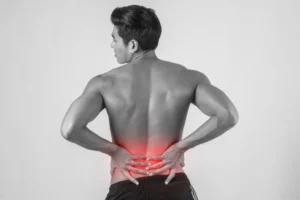 Lower back pain is a common complaint that affects millions of people worldwide, impacting their quality of life and productivity. Whether caused by poor posture, muscle strain, injury, or underlying medical conditions, lower back pain can be debilitating and challenging to manage.
Lower back pain is a common complaint that affects millions of people worldwide, impacting their quality of life and productivity. Whether caused by poor posture, muscle strain, injury, or underlying medical conditions, lower back pain can be debilitating and challenging to manage.
While seeking medical advice is crucial for addressing the root cause of lower back pain, there are several evidence-based remedies and strategies that individuals can incorporate into their daily routines to alleviate discomfort and improve function.
Today, we explore recommended remedies for lower back pain relief, offering practical tips and insights to help individuals find relief and regain mobility.
Maintaining Proper Posture
Poor posture is a common contributor to lower back pain, as it places undue stress on the muscles, ligaments, and joints of the spine. Practicing good posture can help distribute weight more evenly, reducing strain on the lower back. When sitting or standing, aim to:
- Keep the shoulders back and relaxed
- Align the ears, shoulders, and hips in a straight line
- Use ergonomic furniture and supports to maintain spinal alignment
- Take regular breaks to stretch and change positions throughout the day
Regular Exercise and Physical Activity
Engaging in regular exercise and physical activity is essential for strengthening the muscles that support the spine, improving flexibility, and promoting overall spinal health. Examples of exercises that may benefit individuals with lower back pain include:
- Core-strengthening exercises such as planks, bridges, and abdominal crunches
- Low-impact aerobic activities like walking, swimming, or cycling
- Flexibility exercises such as yoga or tai chi, can improve the range of motion and reduce stiffness in the lower back
Heat and Cold Therapy
Applying heat or cold therapy to the affected area can help alleviate lower back pain and reduce inflammation. Heat therapy, such as using heating pads or warm baths, can help relax tense muscles and increase blood flow to the area. Cold therapy, such as applying ice packs or cold compresses, can numb the area and reduce swelling. Alternating between heat and cold therapy may provide additional relief for some individuals.
Proper Lifting and Movement Techniques
Incorrect lifting and movement techniques can strain the muscles and ligaments of the lower back, leading to injury and pain. When lifting heavy objects or performing repetitive tasks, remember to:
- Bend the knees and keep the back straight
- Use the legs to lift, rather than relying on the back
- Avoid twisting the spine while lifting or carrying objects
- Take frequent breaks and vary tasks to avoid overexertion
Mind-Body Techniques
Mind-body techniques such as mindfulness meditation, deep breathing exercises, and progressive muscle relaxation can help reduce stress, tension, and anxiety, which are often associated with lower back pain. By promoting relaxation and reducing muscle tension, these techniques can complement other treatment modalities and improve overall well-being.
Seeking Professional Help
While self-care strategies can provide relief for mild to moderate lower back pain, it is essential to seek professional medical advice if symptoms persist or worsen. A healthcare provider can perform a thorough evaluation, diagnose any underlying conditions, and recommend appropriate treatment options, which may include medication, physical therapy, chiropractic care, or interventional procedures.
Lower back pain can significantly impact daily life and mobility, but there are many effective remedies and strategies available for relief. By incorporating these recommended remedies into their daily routines, individuals can take proactive steps to manage lower back pain, improve spinal health, and enhance overall quality of life.
It’s essential to listen to your body, practice self-care, and seek professional help when needed to ensure optimal recovery and long-term relief from lower back pain.
Picture Credit: Freepik
